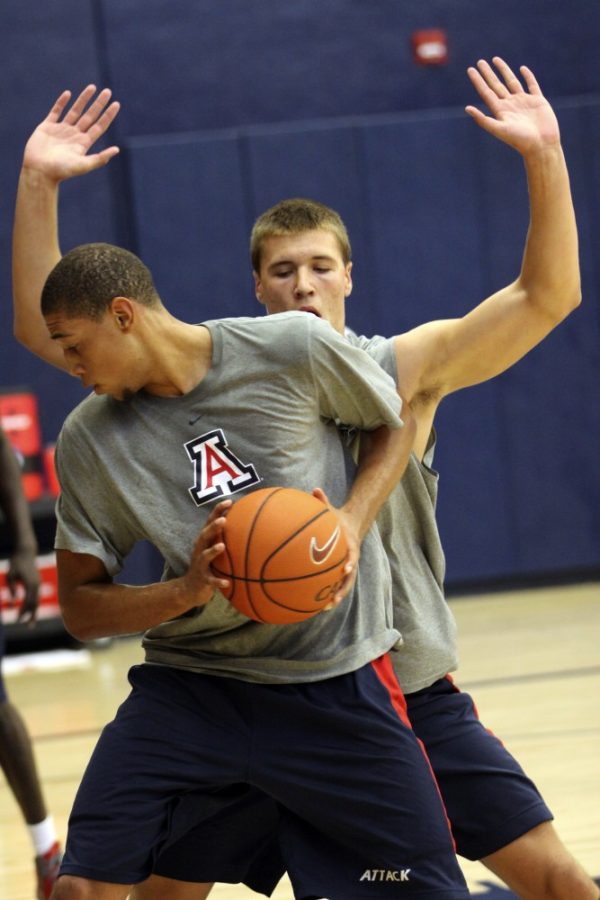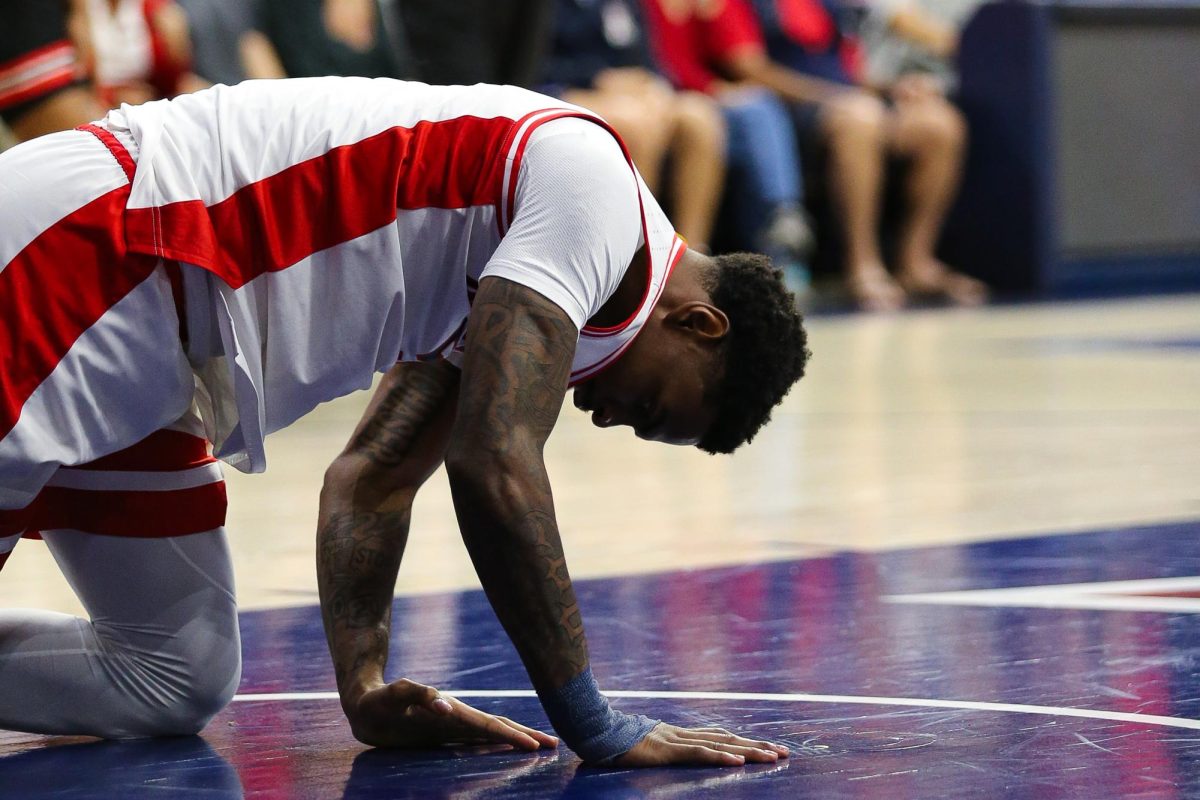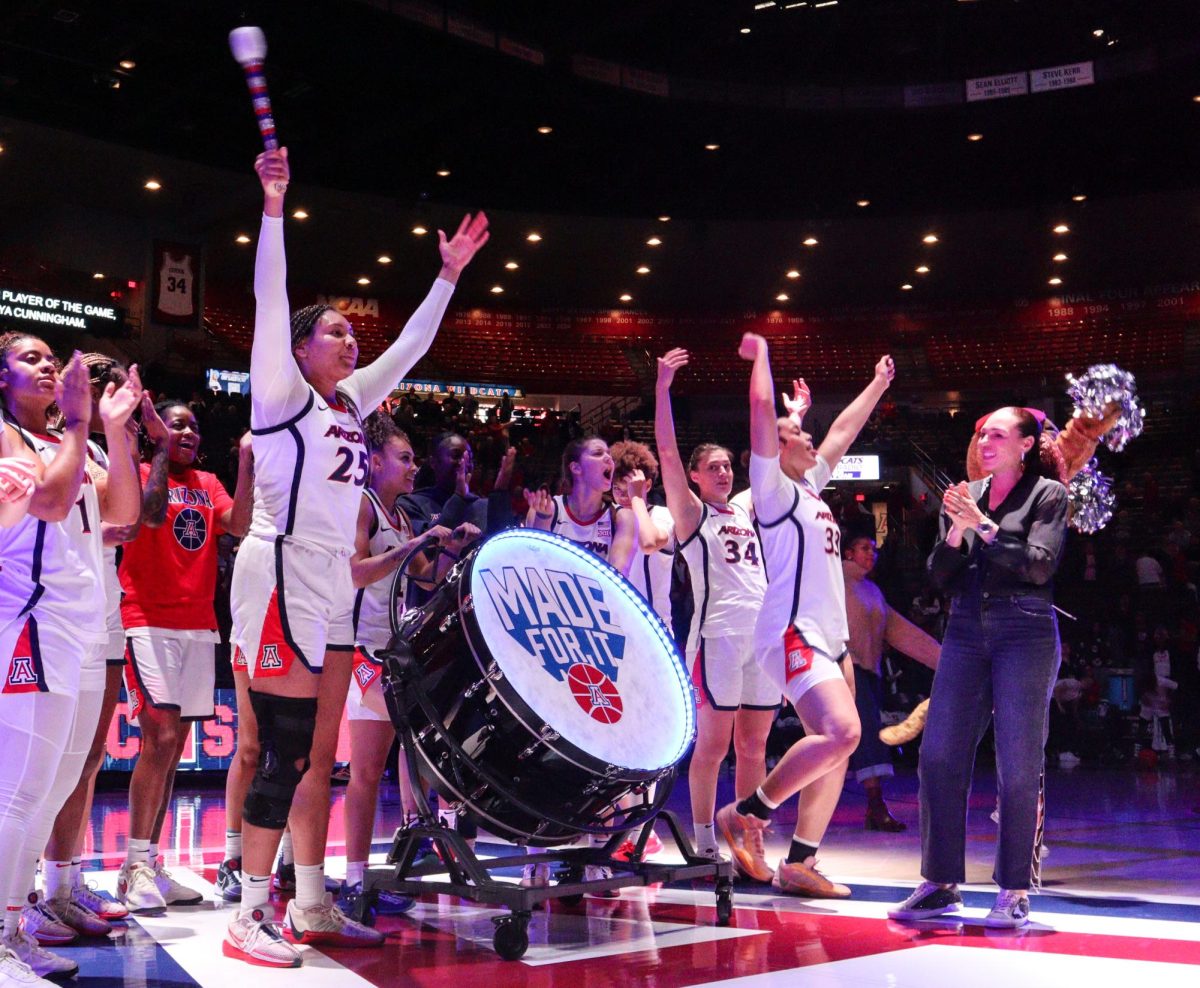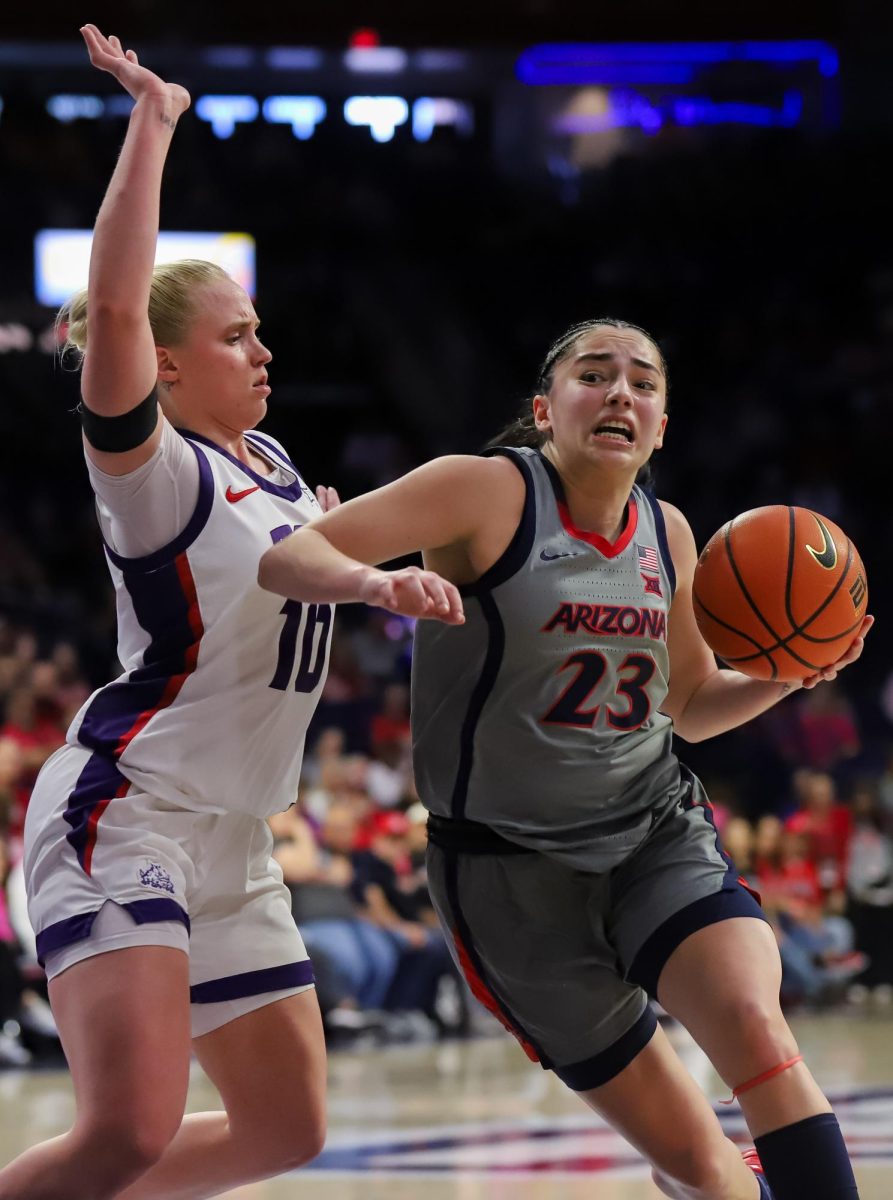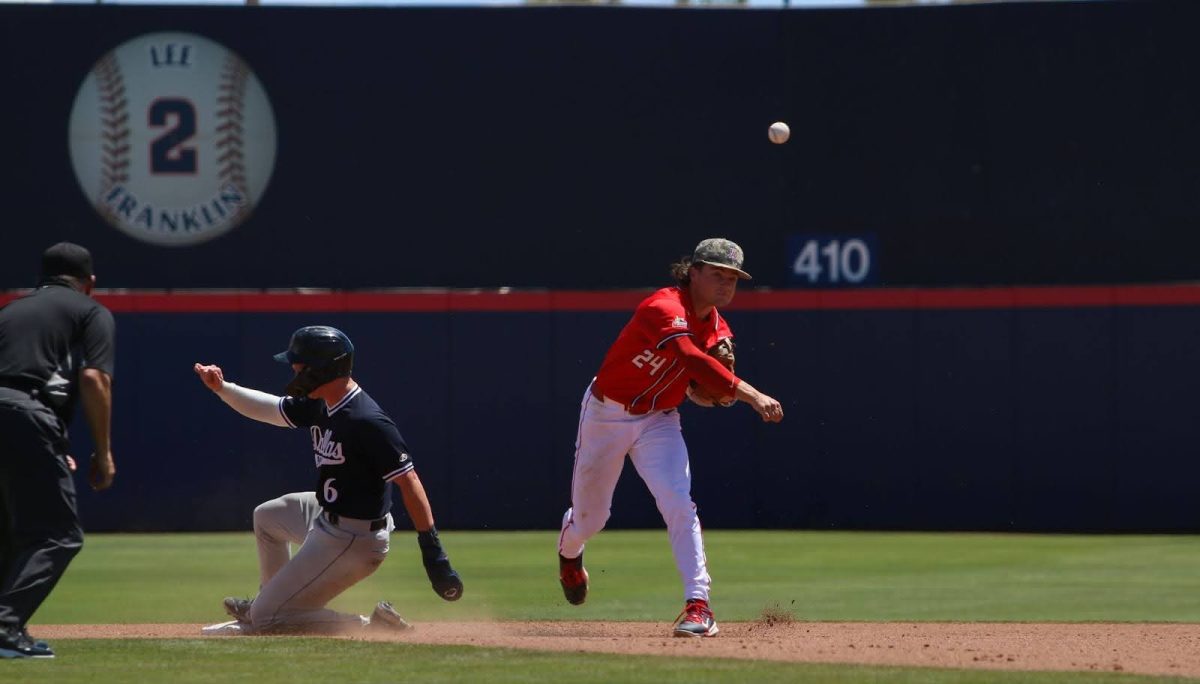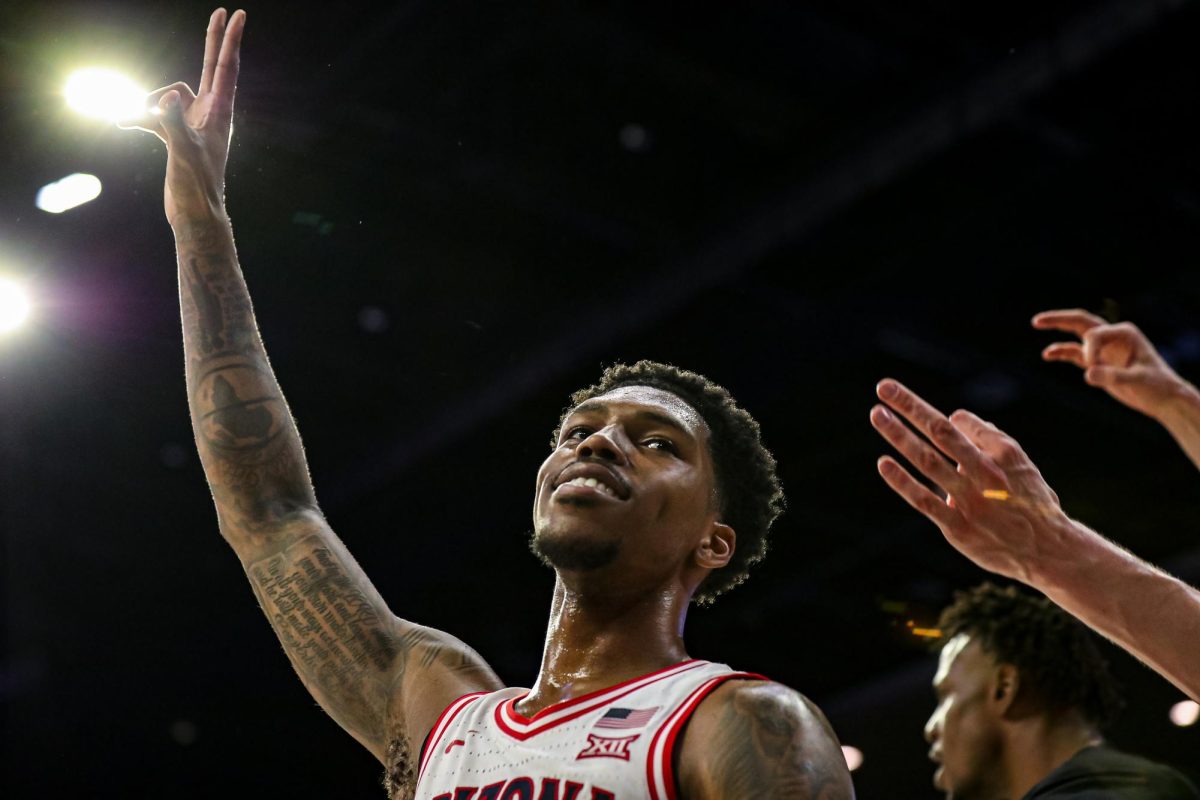This season, the No. 4 Arizona men’s basketball team has something it’s never had before in head coach Sean Miller’s career in Tucson: size.
The addition of three freshmen big men gives the Wildcats an interior presence and rebounding advantage they’ve lacked in the past.
But the height comes at a cost.
Arizona had been one of the best teams at defending the three-point shot, finishing third in the nation in back-to-back seasons.
This year, though, the long-ball defense has slipped and it almost cost the Wildcats in their first two games of Pac-12 play.
“Our young big guys, it’s hard to play college defense in the first year,” Miller said. “They’re learning how important it is, how crucial it is, how each game presents a different challenge.”
Last season’s opponents shot 28.5 percent from three thanks to a small but quick lineup that could close down the perimeter and take away the open looks. This year the number spiked to 36.6 percent.
With almost half the regular season in the books, the statistic is no longer an abnormality, but a trend. The slower and inexperienced frontcourt has something to do with it.
“We have four people that are tall and athletic so it’s just tougher for other teams to score around the basket,” freshman center Kaleb Tarczewski said. “But conversely, I think we were number three in the country last year against three-point field goal percentage, so I think that added length and size has affected us defensively in the three-point area.
“It’s kind of a win-loss, but we’re definitely working on it every game.”
Colorado shot 10-for-15 from three point range in regulation last Thursday, and would have beat Arizona if Sabatino Chen’s desperation three had come a split second sooner. The Buffs fell back to reality by going 0-for-6 in overtime, but they still finished at an impressive clip of 47.6 percent.
While it could have been a case of a hot shooting night for Colorado, a slightly worse three-point team in Utah again showcased the major weakness in the Wildcat defense. The Utes finished 7-for-16 from beyond the arc, and that’s including a cold night from its second-most accurate shooting guard in Jarred DuBois. The team’s leading scorer went 1-for-7 from deep in the game.
The young big men struggled so clearly against Utah that freshman forward Brandon Ashley saw only six minutes of action in the second half, despite playing so well on the offensive end. Ashley scored the Wildcats’ first seven points but didn’t give enough effort on the defensive end to see significant time in second.
“Guys have to get better,” Miller said after the game. “They really do. Brandon was really aggressive — any time you’re 5-for-7 and have 11 points, that’s great. Defensively, no question he struggled. Any fan can see that.”
Miller didn’t specifically call out any player for a reduction of minutes after the game, but he made it clear that the three-point defense has to improve.
“If we’re not going to guard a certain position very well, halfway through the season, then I’m going to shrink his minutes,” Miller said. “We’re not going to keep making the same mistakes and doing the same thing.”
The frontcourt of Tarczewski, Ashley, freshman Grant Jerrett and the less frequently used Angelo Chol has outrebounded opponents by more than 10 boards a game. This rate is significantly better than the plus 1.8 rebound margin Arizona had last year, showing just how effective the added length can be.
But the speed of the game has provided a challenge for the new faces, as the 7-foot Tarczewski pointed out.
“Obviously everyone is a great player, everyone can score but [the difference] is really the speed of the game,” he said. “Just getting used to that is really important.”



